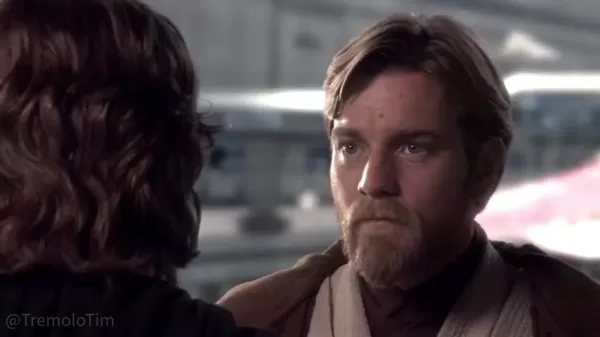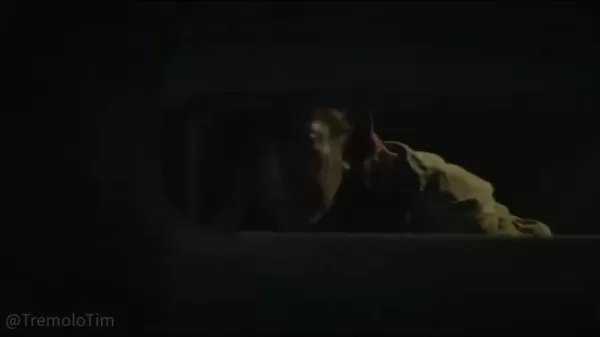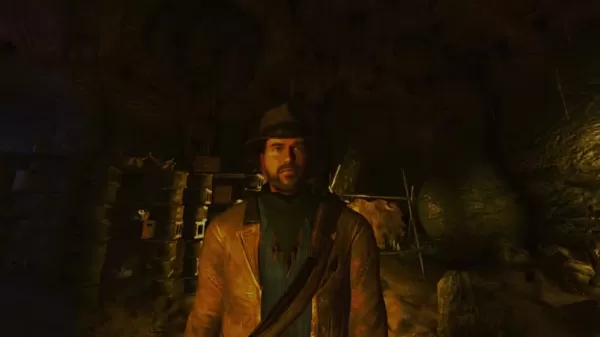Vader's Journey: From Tragedy to Redemption in Star Wars
Darth Vader, a symbol of dread and tyranny, stands as one of cinema’s most iconic antagonists. Yet, beneath the mask lies a tale of tragedy, loss, and ultimate redemption. This article explores Anakin Skywalker’s transformation into Darth Vader, examining the pivotal moments, emotions, and choices that defined his path in the Star Wars saga.
Key Points
Anakin Skywalker’s early years and Jedi training were shaped by emotional struggles and deep attachments.
His fear of losing loved ones and hunger for control drove him into Emperor Palpatine’s grasp.
The Mustafar duel left him with severe physical and emotional scars, cementing his identity as Darth Vader.
Vader’s reign of terror was driven by pain, rage, and a distorted sense of justice.
His love for his son, Luke Skywalker, ultimately reignited his path to the light side of the Force.
The Fall of Anakin Skywalker
Anakin’s Early Life and Jedi Training: Roots of Turmoil
Anakin Skywalker’s story begins on Tatooine, a desert world where he and his mother, Shmi, live as slaves. His extraordinary Force sensitivity catches the eye of Jedi Master Qui-Gon Jinn.

Qui-Gon sees Anakin as the Chosen One, destined to restore balance to the Force.
Despite the Jedi Order’s ban on attachments, Anakin forms deep bonds with his mentor, Obi-Wan Kenobi, and Senator Padmé Amidala. These connections fuel both his strength and his vulnerabilities. His fears of loss, rooted in his childhood as a slave and the Jedi’s rigid emotional discipline, create inner turmoil ripe for exploitation.
Anakin’s bond with Obi-Wan was one of respect and care, but it remained a mentor-student dynamic, never equal. While a chain of command was necessary, open dialogue was lacking. As the supposed Chosen One, Anakin needed understanding and guidance to navigate his emotional struggles. The Jedi Code forbade attachments, yet the Council chose to train him despite knowing his deep tie to his mother, sowing seeds of conflict.
Palpatine’s Shadow: A Web of Manipulation
Senator Palpatine, secretly the Sith Lord Darth Sidious, spots Anakin’s potential and masterfully exploits his fears and doubts. Posing as a trusted ally, Palpatine offers the validation and power Anakin seeks. As Anakin’s frustration with the Jedi Council grows, Palpatine’s influence deepens, promising the ability to defy death—a power the Jedi deem unattainable.
Palpatine preys on Anakin’s emotional volatility, fueling his disillusionment with the Jedi’s strict code. While the Council reprimands Anakin for defying their rules, Palpatine plays the role of a supportive confidant, subtly sowing discord. He praises Anakin as the most powerful Jedi, feeding his desire for recognition and authority—a tactic common among Sith Lords.
Palpatine also manipulates Anakin’s views on order and justice. The Jedi champion peace, but Anakin sees their decisions as flawed, especially in wartime. Palpatine exploits this, promising a stronger, more just galaxy under his rule. Over time, Anakin’s faith in the Jedi and the Republic erodes, leaving him reliant on Palpatine.
The Mustafar Tragedy: Descent into Darkness
Driven by his need to save Padmé and convinced the Jedi are betraying the Republic, Anakin yields to Palpatine’s influence and pledges himself to the Sith. Reborn as Darth Vader, he unleashes devastation, slaughtering Jedi at the Temple, including younglings, and eliminating Separatist leaders on Mustafar.

Obi-Wan confronts Anakin on the volcanic planet of Mustafar in a heart-wrenching duel between former allies. For Obi-Wan, it’s a painful necessity; for Anakin, it’s the ultimate betrayal. The clash ends with Anakin gravely injured, consumed by lava. Palpatine intervenes, encasing him in a life-support suit, transforming him into the fearsome Darth Vader, the Emperor’s enforcer.
Darth Vader: A Reign of Terror
Enforcer of the Empire: Fear and Domination
As Darth Vader, Anakin becomes the Galactic Empire’s iron fist, ruling through terror and wielding the dark side with ruthless precision. He hunts surviving Jedi, quells uprisings, and enforces Palpatine’s will across the galaxy. His suit, both a lifeline and a prison, symbolizes his power and his losses.

Vader is Palpatine’s most loyal enforcer, feared throughout the galaxy. His need for approval drives him to commit heinous acts, with Palpatine always encouraging his descent. Once destined to balance the Force, Vader becomes its most terrifying adversary.
Vader’s suit is a perfect cage, locking him in physical pain and mental anguish—a constant reminder of his failures. It ensures his dependence on Palpatine and the Empire for survival while projecting an iconic, fear-inducing image that solidifies the Empire’s dominance.
Inner Turmoil: The Ghost of Anakin Skywalker
Beneath Vader’s menacing exterior, memories of Anakin and his love for Padmé haunt him. These echoes fuel his rage while making him vulnerable to Palpatine’s control.
Surprisingly, Vader rarely reflects on his mother, Shmi, his first attachment. Perhaps she represents a weaker self, while Padmé embodies a stronger, better version of Anakin. The Mustafar tragedy, entirely his doing, haunts him, deepening his isolation. Despite his power, Vader lives in solitude, even within the Empire. His rare moments of vulnerability reveal buried remorse, yet his anger and hatred keep him isolated.
Analyzing Darth Vader’s Redemption
A Glimmer of Hope: Luke Skywalker’s Impact
Vader’s redemption begins with his son, Luke Skywalker. Learning of Luke’s existence stirs dormant feelings of love and compassion. Though Vader initially seeks to turn Luke to the dark side, Luke’s unwavering faith in his father’s goodness challenges him, forcing Vader to confront his choices.
Luke is a living reminder of Anakin’s past, born of love. His persistence reveals the flicker of good still within Vader. This builds to a pivotal moment when Luke refuses the dark side, prompting Vader to act.
The Final Sacrifice: Return to the Light
In Return of the Jedi’s climax, as Palpatine attacks Luke with Force lightning, Vader makes a selfless choice. Defying his master, he hurls Palpatine into the Death Star’s reactor, saving Luke but fatally wounding himself. This act fulfills the Chosen One prophecy, restoring balance to the Force.
In his final moments, Vader asks Luke to remove his mask, wanting to see his son with his own eyes. He acknowledges Luke’s belief in his goodness, dying as Anakin Skywalker, a redeemed hero.
Darth Vader’s Character: A Dance of Light and Dark
Pros
A gripping arc from hero to villain to redeemed hero.
A powerful symbol of the battle between good and evil.
An iconic design and commanding presence that captivates audiences.
Cons
Some view his fall to the dark side as abrupt or unconvincing.
His brutal actions as Vader are unforgivable to some.
His reliance on the Force and lack of personal bonds can make him hard to relate to.
Frequently Asked Questions About Darth Vader
What drove Anakin Skywalker to the dark side?
Anakin’s descent was fueled by fear of loss, a thirst for power, and Palpatine’s manipulation, which deepened his distrust of the Jedi. His intense emotions made him an easy target for Palpatine’s schemes.
What is the significance of Darth Vader’s suit?
Vader’s suit sustains him after Mustafar’s injuries, symbolizing both his power and his losses. Its iconic design reinforces his authority while serving as a constant reminder of his past.
Where did Vader duel Obi-Wan?
Obi-Wan and Anakin clashed on Mustafar, a volcanic planet where Anakin also massacred Separatist leaders.
Related Questions About Darth Vader’s Transformation
Was Darth Vader truly redeemed in Return of the Jedi?
Yes, Vader’s redemption is complete in Return of the Jedi. By sacrificing himself to save Luke, he rejects the dark side and fulfills the Chosen One prophecy. His final act—asking to see Luke without his mask—shows he is no longer the Empire’s enforcer but a father. His internal struggle throughout the trilogy reveals a gradual shift, culminating in his defiance of Palpatine.
How did Vader’s relationship with Palpatine shape his actions?
Vader’s bond with Palpatine was one of manipulation and control. Palpatine exploited Anakin’s fears to turn him, then used his authority to keep him loyal. This drove Vader’s early atrocities but also sparked his redemption when he rejected Palpatine to save Luke.
Related article
 Google AI Ultra Unveiled: Premium Subscription Priced at $249.99 Monthly
Google Unveils Premium AI Ultra SubscriptionAt Google I/O 2025, the tech giant announced its new comprehensive AI subscription service - Google AI Ultra. Priced at $249.99 monthly, this premium offering provides exclusive access to Google's most adva
Google AI Ultra Unveiled: Premium Subscription Priced at $249.99 Monthly
Google Unveils Premium AI Ultra SubscriptionAt Google I/O 2025, the tech giant announced its new comprehensive AI subscription service - Google AI Ultra. Priced at $249.99 monthly, this premium offering provides exclusive access to Google's most adva
 AI-Generated Crossover Unites Arthur Morgan and Joshua Graham in Gaming Multiverse
When Gaming Worlds Collide: Arthur Morgan Meets the Burned ManPicture a realm where legendary game characters step beyond their own stories - what unfolds when Red Dead Redemption 2's Arthur Morgan crosses paths with Fallout: New Vegas' scarred proph
AI-Generated Crossover Unites Arthur Morgan and Joshua Graham in Gaming Multiverse
When Gaming Worlds Collide: Arthur Morgan Meets the Burned ManPicture a realm where legendary game characters step beyond their own stories - what unfolds when Red Dead Redemption 2's Arthur Morgan crosses paths with Fallout: New Vegas' scarred proph
 Microsoft hosts xAI's advanced Grok 3 models in new AI collaboration
Earlier this month, my *Notepad* investigative journalism uncovered Microsoft's plans to integrate Elon Musk's Grok AI models - revelations that have now been officially confirmed. Today at Microsoft's annual Build developer conference, company execu
Comments (1)
0/200
Microsoft hosts xAI's advanced Grok 3 models in new AI collaboration
Earlier this month, my *Notepad* investigative journalism uncovered Microsoft's plans to integrate Elon Musk's Grok AI models - revelations that have now been officially confirmed. Today at Microsoft's annual Build developer conference, company execu
Comments (1)
0/200
![AlbertWilson]() AlbertWilson
AlbertWilson
 August 26, 2025 at 1:25:25 AM EDT
August 26, 2025 at 1:25:25 AM EDT
Vader’s story always hits hard! From a hopeful Jedi to a Sith Lord, his journey is such a wild ride. The redemption at the end gets me every time 😢. Makes you wonder if anyone’s truly beyond saving.


 0
0
Darth Vader, a symbol of dread and tyranny, stands as one of cinema’s most iconic antagonists. Yet, beneath the mask lies a tale of tragedy, loss, and ultimate redemption. This article explores Anakin Skywalker’s transformation into Darth Vader, examining the pivotal moments, emotions, and choices that defined his path in the Star Wars saga.
Key Points
Anakin Skywalker’s early years and Jedi training were shaped by emotional struggles and deep attachments.
His fear of losing loved ones and hunger for control drove him into Emperor Palpatine’s grasp.
The Mustafar duel left him with severe physical and emotional scars, cementing his identity as Darth Vader.
Vader’s reign of terror was driven by pain, rage, and a distorted sense of justice.
His love for his son, Luke Skywalker, ultimately reignited his path to the light side of the Force.
The Fall of Anakin Skywalker
Anakin’s Early Life and Jedi Training: Roots of Turmoil
Anakin Skywalker’s story begins on Tatooine, a desert world where he and his mother, Shmi, live as slaves. His extraordinary Force sensitivity catches the eye of Jedi Master Qui-Gon Jinn.

Qui-Gon sees Anakin as the Chosen One, destined to restore balance to the Force.
Despite the Jedi Order’s ban on attachments, Anakin forms deep bonds with his mentor, Obi-Wan Kenobi, and Senator Padmé Amidala. These connections fuel both his strength and his vulnerabilities. His fears of loss, rooted in his childhood as a slave and the Jedi’s rigid emotional discipline, create inner turmoil ripe for exploitation.
Anakin’s bond with Obi-Wan was one of respect and care, but it remained a mentor-student dynamic, never equal. While a chain of command was necessary, open dialogue was lacking. As the supposed Chosen One, Anakin needed understanding and guidance to navigate his emotional struggles. The Jedi Code forbade attachments, yet the Council chose to train him despite knowing his deep tie to his mother, sowing seeds of conflict.
Palpatine’s Shadow: A Web of Manipulation
Senator Palpatine, secretly the Sith Lord Darth Sidious, spots Anakin’s potential and masterfully exploits his fears and doubts. Posing as a trusted ally, Palpatine offers the validation and power Anakin seeks. As Anakin’s frustration with the Jedi Council grows, Palpatine’s influence deepens, promising the ability to defy death—a power the Jedi deem unattainable.
Palpatine preys on Anakin’s emotional volatility, fueling his disillusionment with the Jedi’s strict code. While the Council reprimands Anakin for defying their rules, Palpatine plays the role of a supportive confidant, subtly sowing discord. He praises Anakin as the most powerful Jedi, feeding his desire for recognition and authority—a tactic common among Sith Lords.
Palpatine also manipulates Anakin’s views on order and justice. The Jedi champion peace, but Anakin sees their decisions as flawed, especially in wartime. Palpatine exploits this, promising a stronger, more just galaxy under his rule. Over time, Anakin’s faith in the Jedi and the Republic erodes, leaving him reliant on Palpatine.
The Mustafar Tragedy: Descent into Darkness
Driven by his need to save Padmé and convinced the Jedi are betraying the Republic, Anakin yields to Palpatine’s influence and pledges himself to the Sith. Reborn as Darth Vader, he unleashes devastation, slaughtering Jedi at the Temple, including younglings, and eliminating Separatist leaders on Mustafar.

Obi-Wan confronts Anakin on the volcanic planet of Mustafar in a heart-wrenching duel between former allies. For Obi-Wan, it’s a painful necessity; for Anakin, it’s the ultimate betrayal. The clash ends with Anakin gravely injured, consumed by lava. Palpatine intervenes, encasing him in a life-support suit, transforming him into the fearsome Darth Vader, the Emperor’s enforcer.
Darth Vader: A Reign of Terror
Enforcer of the Empire: Fear and Domination
As Darth Vader, Anakin becomes the Galactic Empire’s iron fist, ruling through terror and wielding the dark side with ruthless precision. He hunts surviving Jedi, quells uprisings, and enforces Palpatine’s will across the galaxy. His suit, both a lifeline and a prison, symbolizes his power and his losses.

Vader is Palpatine’s most loyal enforcer, feared throughout the galaxy. His need for approval drives him to commit heinous acts, with Palpatine always encouraging his descent. Once destined to balance the Force, Vader becomes its most terrifying adversary.
Vader’s suit is a perfect cage, locking him in physical pain and mental anguish—a constant reminder of his failures. It ensures his dependence on Palpatine and the Empire for survival while projecting an iconic, fear-inducing image that solidifies the Empire’s dominance.
Inner Turmoil: The Ghost of Anakin Skywalker
Beneath Vader’s menacing exterior, memories of Anakin and his love for Padmé haunt him. These echoes fuel his rage while making him vulnerable to Palpatine’s control.
Surprisingly, Vader rarely reflects on his mother, Shmi, his first attachment. Perhaps she represents a weaker self, while Padmé embodies a stronger, better version of Anakin. The Mustafar tragedy, entirely his doing, haunts him, deepening his isolation. Despite his power, Vader lives in solitude, even within the Empire. His rare moments of vulnerability reveal buried remorse, yet his anger and hatred keep him isolated.
Analyzing Darth Vader’s Redemption
A Glimmer of Hope: Luke Skywalker’s Impact
Vader’s redemption begins with his son, Luke Skywalker. Learning of Luke’s existence stirs dormant feelings of love and compassion. Though Vader initially seeks to turn Luke to the dark side, Luke’s unwavering faith in his father’s goodness challenges him, forcing Vader to confront his choices.
Luke is a living reminder of Anakin’s past, born of love. His persistence reveals the flicker of good still within Vader. This builds to a pivotal moment when Luke refuses the dark side, prompting Vader to act.
The Final Sacrifice: Return to the Light
In Return of the Jedi’s climax, as Palpatine attacks Luke with Force lightning, Vader makes a selfless choice. Defying his master, he hurls Palpatine into the Death Star’s reactor, saving Luke but fatally wounding himself. This act fulfills the Chosen One prophecy, restoring balance to the Force.
In his final moments, Vader asks Luke to remove his mask, wanting to see his son with his own eyes. He acknowledges Luke’s belief in his goodness, dying as Anakin Skywalker, a redeemed hero.
Darth Vader’s Character: A Dance of Light and Dark
Pros
A gripping arc from hero to villain to redeemed hero.
A powerful symbol of the battle between good and evil.
An iconic design and commanding presence that captivates audiences.
Cons
Some view his fall to the dark side as abrupt or unconvincing.
His brutal actions as Vader are unforgivable to some.
His reliance on the Force and lack of personal bonds can make him hard to relate to.
Frequently Asked Questions About Darth Vader
What drove Anakin Skywalker to the dark side?
Anakin’s descent was fueled by fear of loss, a thirst for power, and Palpatine’s manipulation, which deepened his distrust of the Jedi. His intense emotions made him an easy target for Palpatine’s schemes.
What is the significance of Darth Vader’s suit?
Vader’s suit sustains him after Mustafar’s injuries, symbolizing both his power and his losses. Its iconic design reinforces his authority while serving as a constant reminder of his past.
Where did Vader duel Obi-Wan?
Obi-Wan and Anakin clashed on Mustafar, a volcanic planet where Anakin also massacred Separatist leaders.
Related Questions About Darth Vader’s Transformation
Was Darth Vader truly redeemed in Return of the Jedi?
Yes, Vader’s redemption is complete in Return of the Jedi. By sacrificing himself to save Luke, he rejects the dark side and fulfills the Chosen One prophecy. His final act—asking to see Luke without his mask—shows he is no longer the Empire’s enforcer but a father. His internal struggle throughout the trilogy reveals a gradual shift, culminating in his defiance of Palpatine.
How did Vader’s relationship with Palpatine shape his actions?
Vader’s bond with Palpatine was one of manipulation and control. Palpatine exploited Anakin’s fears to turn him, then used his authority to keep him loyal. This drove Vader’s early atrocities but also sparked his redemption when he rejected Palpatine to save Luke.
 Google AI Ultra Unveiled: Premium Subscription Priced at $249.99 Monthly
Google Unveils Premium AI Ultra SubscriptionAt Google I/O 2025, the tech giant announced its new comprehensive AI subscription service - Google AI Ultra. Priced at $249.99 monthly, this premium offering provides exclusive access to Google's most adva
Google AI Ultra Unveiled: Premium Subscription Priced at $249.99 Monthly
Google Unveils Premium AI Ultra SubscriptionAt Google I/O 2025, the tech giant announced its new comprehensive AI subscription service - Google AI Ultra. Priced at $249.99 monthly, this premium offering provides exclusive access to Google's most adva
 AI-Generated Crossover Unites Arthur Morgan and Joshua Graham in Gaming Multiverse
When Gaming Worlds Collide: Arthur Morgan Meets the Burned ManPicture a realm where legendary game characters step beyond their own stories - what unfolds when Red Dead Redemption 2's Arthur Morgan crosses paths with Fallout: New Vegas' scarred proph
AI-Generated Crossover Unites Arthur Morgan and Joshua Graham in Gaming Multiverse
When Gaming Worlds Collide: Arthur Morgan Meets the Burned ManPicture a realm where legendary game characters step beyond their own stories - what unfolds when Red Dead Redemption 2's Arthur Morgan crosses paths with Fallout: New Vegas' scarred proph
 Microsoft hosts xAI's advanced Grok 3 models in new AI collaboration
Earlier this month, my *Notepad* investigative journalism uncovered Microsoft's plans to integrate Elon Musk's Grok AI models - revelations that have now been officially confirmed. Today at Microsoft's annual Build developer conference, company execu
Microsoft hosts xAI's advanced Grok 3 models in new AI collaboration
Earlier this month, my *Notepad* investigative journalism uncovered Microsoft's plans to integrate Elon Musk's Grok AI models - revelations that have now been officially confirmed. Today at Microsoft's annual Build developer conference, company execu
 August 26, 2025 at 1:25:25 AM EDT
August 26, 2025 at 1:25:25 AM EDT
Vader’s story always hits hard! From a hopeful Jedi to a Sith Lord, his journey is such a wild ride. The redemption at the end gets me every time 😢. Makes you wonder if anyone’s truly beyond saving.


 0
0





























